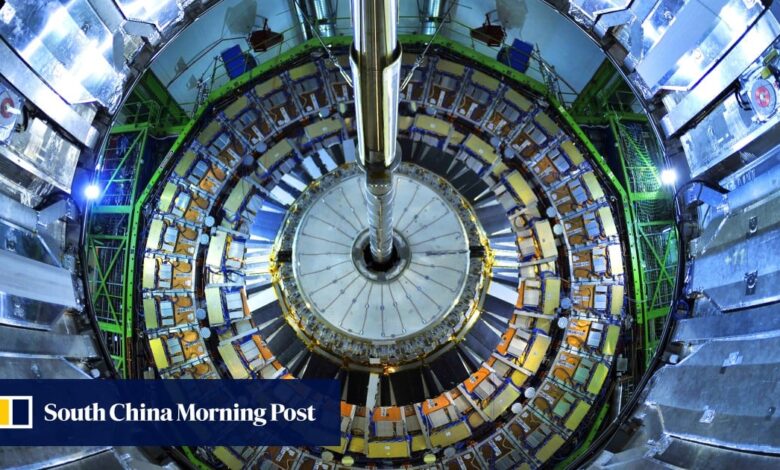China plans to build US$618 million Super Tau-Charm Facility, a particle collider to test modern theory of matter

[ad_1]
Key technologies for the 4.5-billion-yuan (US$618 million) Super Tau-Charm Facility (STCF) are now being developed, and construction can start in three years, according to scientists involved in the project.
Once operational, the collider will produce a huge amount of subatomic particles known as tau leptons and charm quarks to help better understand how they come together to form larger structures of matter.
“STCF will allow China to lead the world in tau-charm physics and related technologies for decades to come,” said project chief scientist Zhao Zhengguo, of the University of Science and Technology of China.
“It will also address cutting-edge scientific questions such as the nature of strong interaction, and why the universe is dominated by matter instead of antimatter,” Zhao told China Science Daily on Monday.
The trajectories, energies and electric charges of the subatomic particles are recorded by a so-called spectrometer to help scientists reconstruct the reaction processes.
The odd behaviour of a subatomic particle may shake up physics
The odd behaviour of a subatomic particle may shake up physics
Over the years, BEPC has enabled scientists from around the world to make important discoveries, including the first precision measurement of tau’s mass in the 1990s.
More recently, it was used to study particles seeming to contain four or more quarks, which usually come in twos or threes according to the Standard Model, which is the current best theory to describe the basic building blocks of the universe.
However, Zhao said BEPC’s location in the Chinese capital limited its potential to substantially expand to next-level precision, and STCF – to be built in south China – was proposed as a natural extension of BEPC.
Compared with the existing tau-charm factory in Beijing, STCF will have a similar design but will be more than double the size, according to a conceptual design report released in March.
Its linear accelerator will be 400 metres (1,310 feet) long, and the two rings for storing electrons and positrons would each be about 800 metres in circumference, said the report, which was co-authored by scientists from China, the United States, Russia, South Korea and several European countries.
The Super Tau-Charm Facility will increase the collision rates by up to 100 times, meaning that in just three days it will collect the amount of data it takes BEPC a year to gather, according to the international team.
The new collider would also open a new energy region that had never directly been studied before, opening the door to uncharted territory, and even new physics beyond the Standard Model, they said.
To achieve well controlled collisions inside the STCF, Zhao and his team have been developing key technologies such as high-power electron and positron sources, superconducting magnets, high-precision detectors and ultra-fast/ultra-weak signal readout electronics.
They hoped to finish developing the technologies by the end of 2025 and build the collider during the 15th Five-Year Plan period (2026-2030), Zhao said.
Chinese particle collider opens up new frontier in figuring out the world
Chinese particle collider opens up new frontier in figuring out the world
The team had received 420 million yuan from local governments to tackle key technologies, he revealed. Potential sites to house the STCF included Hefei in Anhui province, Shaoxing in Zhejiang province and Zhengzhou in Henan province.
[ad_2]
Source link







